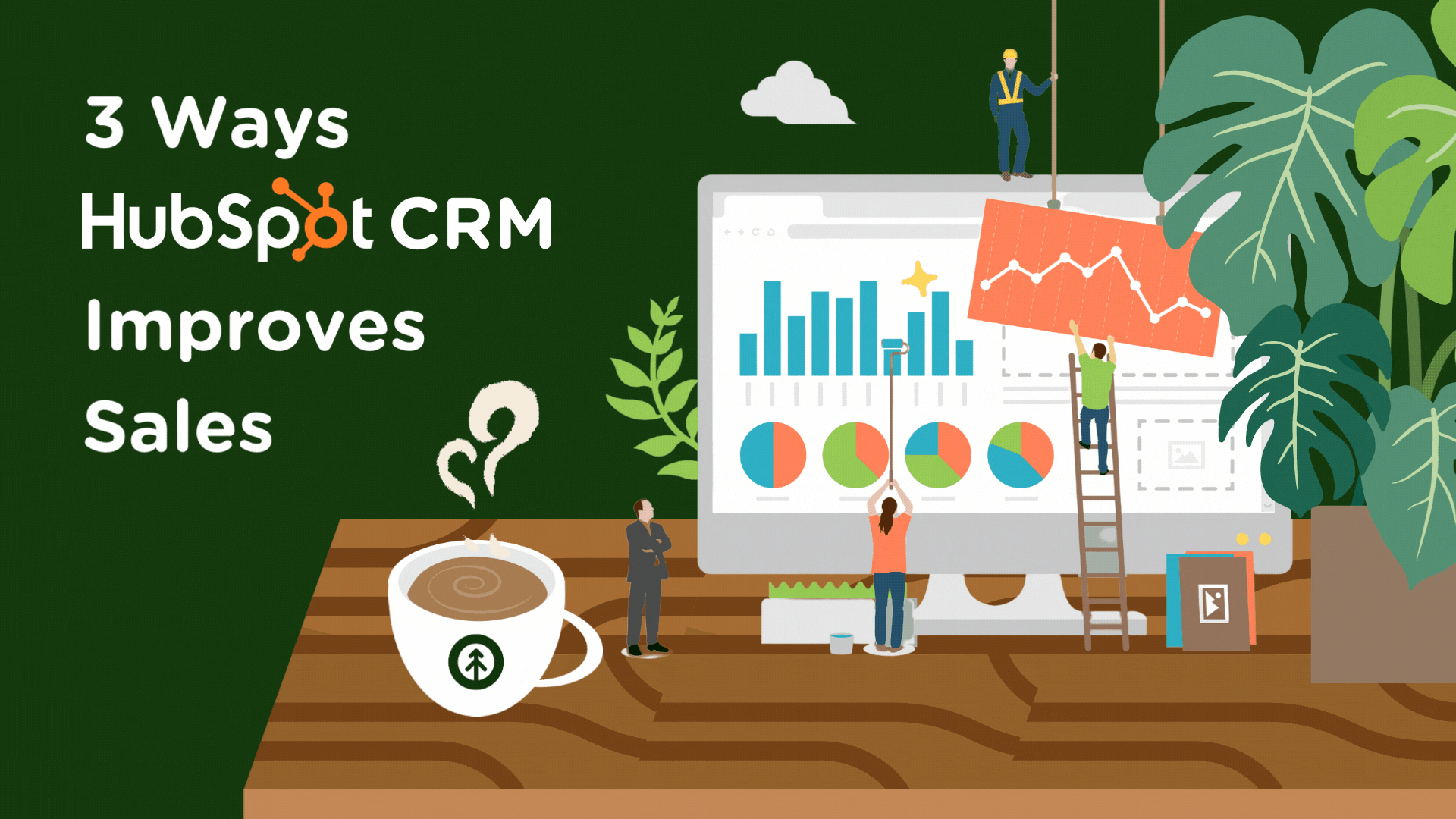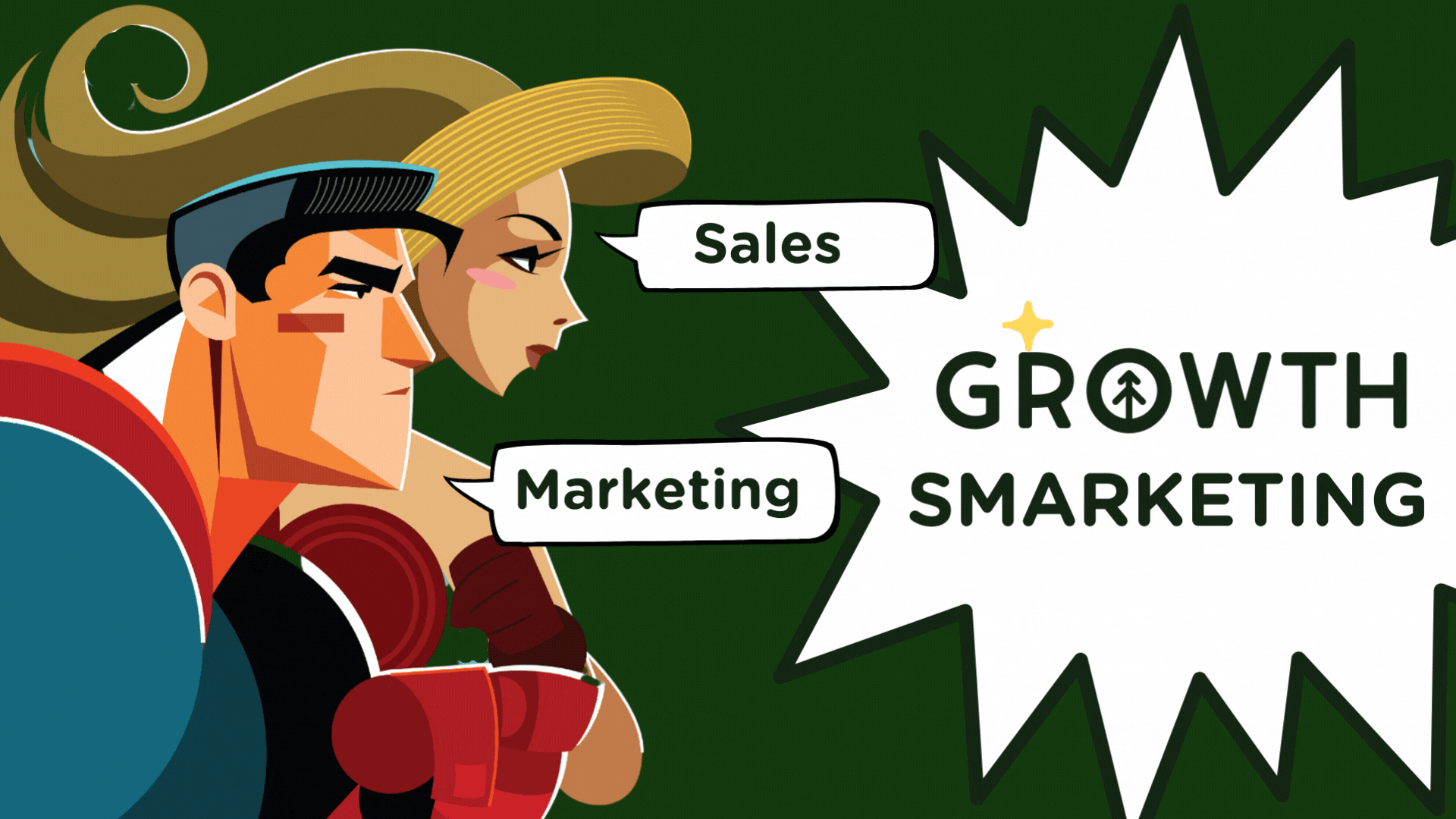5 Biggest Challenges of Account-Based Marketing + How to Overcome Them
ABM or Account-Based Marketing is an approach to creating leads for your B2B business that is targeted specifically for your ideal client. Paired with Inbound Marketing, it has the best chance of creating sustainable growth for your business and a better buying experience for your clients.
But, it requires a strong sales and marketing alignment that can be difficult to achieve.
Unless you have the right tools to help your teams achieve this.
In the past, and without HubSpot, businesses have struggled to bridge the chasm that’s often present between sales and marketing.
And since sales and marketing must work closely together to achieve positive results in an ABM strategy, the challenges can be insurmountable without a tool to overcome them.
And HubSpot was built to do just that.

What are the 5 biggest challenges with ABM without HubSpot? Let’s take a look:
- Siloed Information and Data
- Difficult Targeting Processes
- Labored Communication Between Sales and Marketing
- Lead Scoring Disconnected from Companies
- Messy Metrics and Analytics
But HubSpot’s ABM tools have improved the process so dramatically that ABM is transforming the way B2B marketers and sales teams do business (and improve the buyer experience).
Now, sales and marketing can work together seamlessly which makes Account-based Marketing accessible for any size business.
Now, the 5 biggest challenges are actually benefits that positively affect your bottom line:
- Previously Siloed Data is Now Shared Data
- Targeting Process is Simplified
- Sales + Marketing Teams Can Be SuperCollaborators
- Lead Scoring Focuses on Companies
- Clean, Clear Analytics Accessible
1. Siloed Data, Shared
Before HubSpot, information about marketing campaigns and sales conversations were handled by two different tools that didn’t even talk to each other, much less work together.
Now, both teams can easily collaborate and share one source of truth through the HubSpot ecosystem.
HubSpot’s ABM tool allows you to create, plan, and execute an ABM strategy that is accessible to every member of your RevOps team.
With HubSpot, sales and marketing teams can work together to target key accounts using workflows and sequence automation on one platform that they can both see and use.
And it saves your budget by using only one software solution instead of two or more.
2. Targeting Processes, Simplified
In the past, targeting prospects for your ABM campaigns was tough and time-consuming.
Sales reps and marketing coordinators often manually researched prospective companies and roles on LinkedIn (or something even more laborious).
What we know now is that that’s just a waste of precious human energy and time that could be better spent on truly engaging with the right prospects and leads at the right time for that client’s buyer journey.

HubSpot’s ABM tools allow sales reps to identify the exact right prospects for your business by allowing them to create an ideal customer profile and then utilize workflow and sequences to generate a list of prospects for ABM targeting.
Your sales reps can also upload gathered information and target prospects they run across on LinkedIn or at tradeshows so that nurturing campaigns can reach prospects no matter your sales team’s process for prospecting.
HubSpot also lets you designate different roles within companies: decision-makers, blockers, helpers, etc. so that messaging can be tailored specifically to the receiver and their specific needs.
And because HubSpot and LinkedIn work seamlessly together, it’s easy for marketing teams to focus ABM campaigns on specific users of the platform who need what only your business can do best.
3. Sales + Marketing Teams, SuperCollaborators
In order for ABM campaigns to work, there absolutely must be a close collaboration between sales and marketing.
Sales teams need to know what content their prospects have seen from your company (so they don’t waste time sharing information the prospect already knows), and marketing needs to know who to target with their messaging.
HubSpot tools create the perfect situation for these traditionally-separated teams to be besties.

In HubSpot, sales and marketing share the same data but with different views that show them each what’s relevant and valuable to their roles in your company.
HubSpot’s ABM software shows your sales team exactly which messaging is going to their target accounts.
While marketers can utilize AI-powered analytics to make sure sales reps never miss an opportunity to have a great conversation with the right prospects and leads.
4. Lead Scoring = Company Scoring
Of course, lead scoring is a smart way to gain insight into where your prospects are on the buyer’s journey so that you can give them the information they need to move the conversational needle.
But that’s not so easy when you’re a B2B business using ABM—when your prospects are entire organizations or businesses, not individual people.
It’s hard without HubSpot, that is.
With HubSpot, you can automatically score companies based on a percentage score of how well they fit with your other accounts. Brilliant, right?
Indeed.
When you use positive and negative attributes, you can very easily build a system inside the HubSpot ABM tool that can show you how well your ideal customer compares to companies you’re in conversation with.
And it allows both sales and marketing to collaborate on which companies you’d like to target for campaigns.
That way, your power teams can be focused on exactly how, when, and where to reach more North Star clients, together.
5. Clean, Clear, Accessible Analytics
When your RevOps teams all need access to reports that are helpful to them all, it can be a challenge.
In HubSpot, significant milestones about a specific account’s buyer journey can be tracked, scored, and measured by all your teams based on data gathered in one seamless system.
That way, your ABM strategy can be streamlined and updated quickly based on what’s working and what’s not, allowing teams to pivot and adjust accordingly.
Data-driven decisions can now be made in real-time based on real data presented clearly on customizable dashboards and reports that are shared across your whole organization to keep everyone on the same page.
If you’re thinking about building an ABM strategy for your B2B organization, Growth can help. We’re HubSpot Platinum Solutions Partners, and every member of our team is a HubSpot expert in their area of expertise.
Want to see how Growth + HubSpot can help you create an ABM strategy that’s successful, measurable, and specific to your organization? Talk to us about how we can help. We’re right here.
Explore More Insights: Related Blog Posts
-
 Sales EnablementMar 1, 2023
Sales EnablementMar 1, 2023 Growth Marketing Firm
Growth Marketing Firm3 Ways CRM Software Improves Sales
Customer Relationship Management (CRM) software is a tool designed to help companies manage and analyze their...
-
 CRMNov 9, 2021
CRMNov 9, 2021 Growth Marketing Firm
Growth Marketing FirmHubSpot Delights with Payments
(last updated May 13, 2022) According to the research firm, Gartner, only 23% of B2B buyers say their most...
-
 CRMFeb 18, 2022
CRMFeb 18, 2022 Growth Marketing Firm
Growth Marketing Firm6 HubSpot Features that Boost Customer Experience
When your customers have a delightful experience with your business, they become promoters of it. And thus,...
-
 HubSpotApr 6, 2023
HubSpotApr 6, 2023 Growth Marketing Firm
Growth Marketing FirmThe Transformative Power of Smarketing in 2023
Prospects now have more access to information than ever, and they expect a seamless, cohesive experience with...
-
 Sales EnablementDec 14, 2021
Sales EnablementDec 14, 2021 Growth Marketing Firm
Growth Marketing Firm4 Great Ways to Personalize Sales with HubSpot Snippets
As we round the corner to 2022, we are reminded that one thing we can’t get more of is time.
-
 HubSpotMar 6, 2023
HubSpotMar 6, 2023 Growth Marketing Firm
Growth Marketing FirmHubSpot Data-Driven Marketing Tools for the Gaming Industry
With the rise of online gaming and esports, it’s become more important than ever for game developers and...
-
 HubSpotApr 25, 2023
HubSpotApr 25, 2023 Growth Marketing Firm
Growth Marketing FirmHubSpot for Veterinary Services
HubSpot is a comprehensive suite of tools designed to help you streamline your veterinary practice, enhance...
-
 Website DevelopmentJan 13, 2022
Website DevelopmentJan 13, 2022 Growth Marketing Firm
Growth Marketing FirmTop 10 Benefits of HubSpot CMS
(Last updated February 24, 2023) A Content Management System (CMS) is a software application that allows you...
-
 Discovery + StrategyMar 29, 2021
Discovery + StrategyMar 29, 2021 Ashley Lilly
Ashley LillyGetting Started with HubSpot Onboarding
So you’ve taken that first step to improve your digital marketing approach by investing in HubSpot and want...

